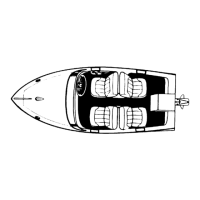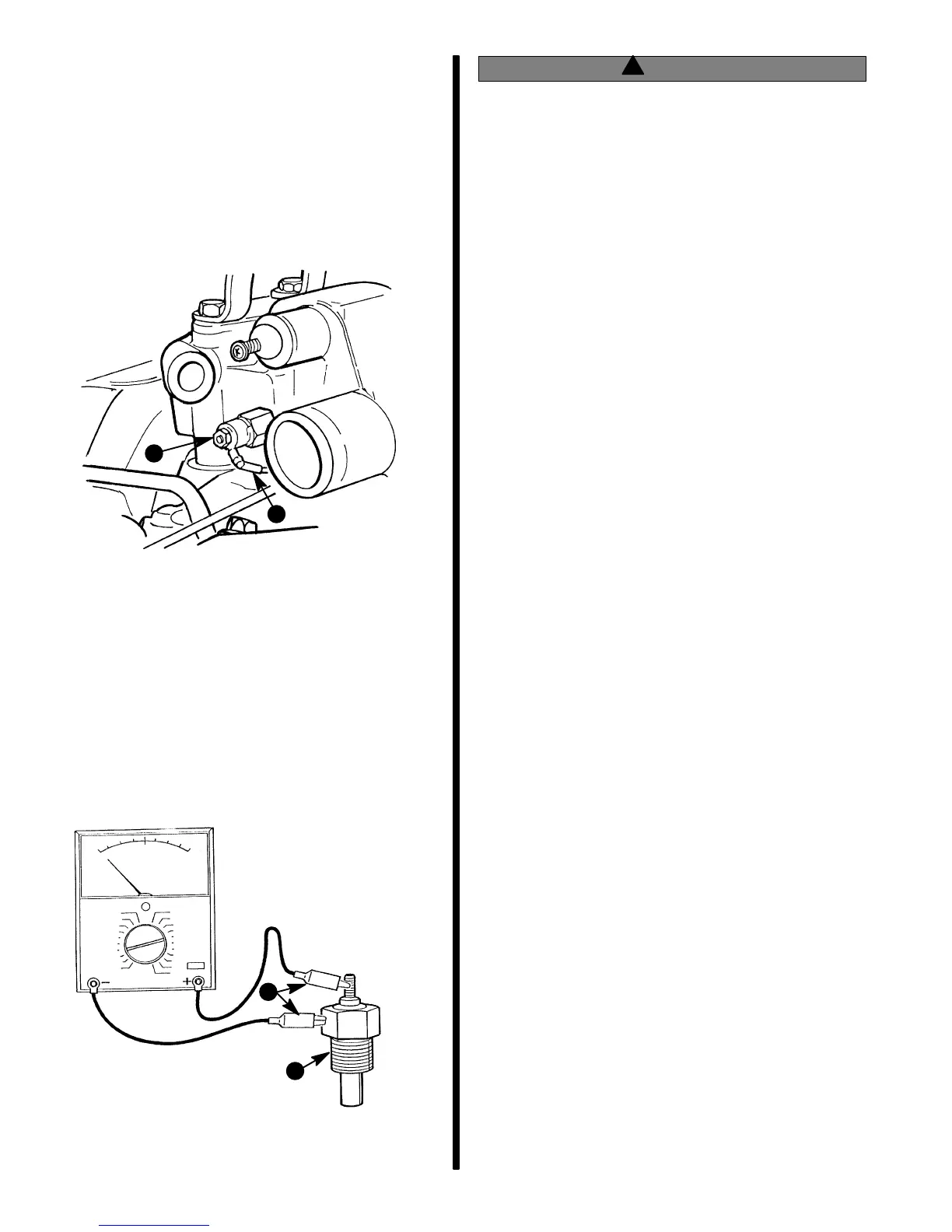4D-6 - INSTRUMENTATION 90-823225--1 1096
Water Temperature
DUAL STATION SENDER IDENTIFICATION
Sender will have 362-BC stamped on hex.
REMOVAL
1. Drain coolant from closed cooling system into a
suitable container as outlined in Section 6B.
2. Remove TAN wire from temperature sender.
72611
b
a
Typical Water Temperature Sender
a - TAN Wire
b - Water Temperature Sender
NOTE: Hoses are shown removed for clarity.
3. Remove temperature sender.
TESTING
1. Connect an ohmmeter between temperature
sender terminal (+) and hex (case) for ground (–)
as shown.
72768
b
a
a - Ohmmeter Leads
b - Water Temperature Sender
!
WARNING
The following test involves the use of intense
heat. Failure to follow appropriate procedures or
warnings can cause burns which can result in se-
vere personal injury. While performing the fol-
lowing test, observe these general precautions:
• Wear personal protective clothing such as
rubber gloves, a non-flammable apron, and
eye protection - preferably full face shield or
safety glasses.
• The appropriate heat source should only be
electric. Heat source should be operated by a
qualified person. Be sure to follow all instruc-
tions of the manufacturer of the heat source.
The heat source should be checked each time
it is used to be sure it is functioning properly.
• The thermometer used in the test should be a
high-temperature thermometer with a maxi-
mum reading of at least 300°F (150°C). Under
no circumstances should the operator allow
temperatures to exceed test specifications.
• Perform test only in a well ventilated area.
• Use a suitable container, such as metal, to
hold the water. Avoid use of glass containers
unless the operator first confirms for himself/
herself that the glass container is an appro-
priate high-temperature vessel.
• Because the components will reach high tem-
peratures DO NOT handle materials or com-
ponents until COMPLETELY cooled.

